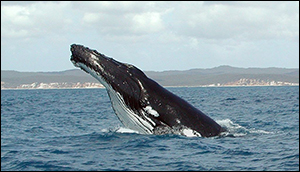Humpback Whales Solve a Big Problem for Wind Turbines
20. 11. 2015 | Wired | www.wired.com
Unlike many of their whale brethren, the humpback doesn’t survive solely on krill, captured by opening their mouths and swimming straight ahead towards the shrimp-like crustaceans. Instead, humpbacks maneuver to catch fish. And to do so, they’ve got to make some tight turns.
Humpbacks can maneuver their flippers to a sharp angle of attack before they start to stall, which lets them develop more lift and make those fish-catching turns. That’s thanks to tubercles, bumps that create scalloped edges on the leading side of their flippers.

Professor Fish and his team engineered flippers with tubercles and without, and tested them in a wind tunnel at the Naval Academy. They found that the tubercles did delay stall, increasing the angle of attack up to 42 percent.
Affixing tubercles to blades has shown similar effects with windmills, fans, surfboard fins, and even a hydroplane. That’s especially important for wind turbines: Gusts from two different directions can stall the blade of a windmill, to the point where it’ll actually blow up. With tubercles, engineers can design windmills with a higher angle, enabling them to get more lift, spin faster, and gather more energy - while (mostly) safely assured that they won’t blow up.
Read more at Wired
Image Credit: Wikipedia
-jk-




